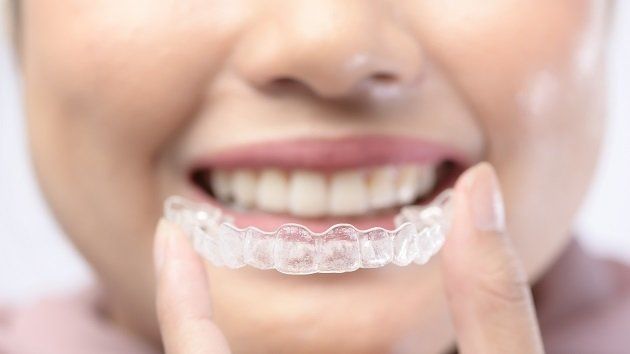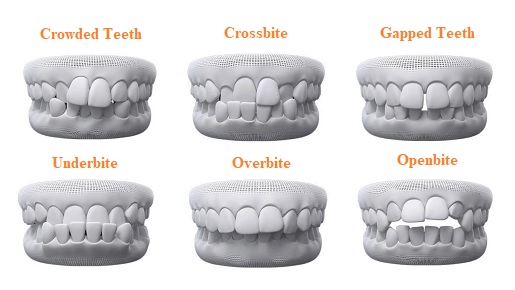Keeping Oral Health While Making Use Of Invisalign: Tips for a Smooth Experience
Keeping Oral Health While Making Use Of Invisalign: Tips for a Smooth Experience
Blog Article
Invisalign vs. Typical Braces: Which Choice Is Right for You?
When considering orthodontic therapy, the option between Invisalign and conventional braces offers numerous crucial aspects that merit careful analysis. Invisalign supplies a very discreet alternative with removable aligners, while typical dental braces offer a more noticeable yet efficient remedy for extreme misalignment.
Summary of Therapy Choices

On the other hand, standard dental braces are composed of metal brackets and cords that are adhered to the teeth. This technique uses continual pressure gradually to attain positioning. While reliable for intricate orthodontic issues, standard dental braces require regular brows through for adjustments and can present obstacles in maintaining oral hygiene because of the trouble of cleansing about cables and braces.
Both alternatives have their merits, and the choice typically rests on details oral problems, way of living preferences, and patient compliance. Ultimately, seeking advice from an orthodontic specialist is crucial for identifying the most suitable treatment plan tailored to individual needs. Understanding the nuances of each option can significantly influence the overall success of orthodontic treatment.
Visual Factors To Consider
A considerable factor affecting the choice in between Invisalign and standard braces is the visual charm each treatment uses. Invisalign aligners are crafted from clear plastic, making them essentially invisible when put on.
In contrast, traditional braces include metal brackets and wires, which can be more recognizable. While innovations in orthodontic innovation have actually brought about the development of smaller sized brackets and tinted elastics, conventional braces still keep an even more conspicuous profile. For some people, the exposure of dental braces may prevent them from seeking needed treatment.
Eventually, the selection between Invisalign and typical braces may depend upon personal preferences regarding aesthetic appeals. Patients who focus on discernment typically favor Invisalign, while those who are less worried concerning visibility may go with traditional braces. Comprehending the visual implications of each option is crucial for making a notified choice that straightens with one's way of living and choices.
Convenience and Convenience

In terms of convenience, Invisalign aligners are detachable, making it possible for individuals to enjoy their favorite foods without constraint and preserve ideal oral health. Cleaning and flossing are streamlined, as the aligners can be secured throughout these regimens, whereas typical braces need cautious maneuvering around wires and braces.
In comparison, traditional braces demand regular changes, making them visit their website less practical for those with active schedules. Generally, the comfort and benefit of Invisalign make it an enticing choice for lots of people seeking orthodontic treatment.
Therapy Period and Effectiveness
While both Invisalign and standard braces work in fixing oral imbalances, the duration of treatment can vary dramatically in between the two choices. Commonly, Invisalign treatment can take anywhere from 12 to 18 months, depending upon the complexity of the situation. The clear aligners function by progressively shifting teeth into their preferred settings, and normal follow-ups with an orthodontist aid ensure progress stays on the right track.
In comparison, typical dental braces often require a longer commitment, typically ranging from 18 months to three years. This is due to their fixed nature and the use of wires and brackets, which can be much more efficient for complex cases and view it severe misalignments (Invisalign). The therapy performance of typical dental braces is well-documented, as they permit specific changes and higher control over tooth motion
Eventually, the choice between Invisalign and traditional dental braces might depend upon both the expected treatment period and the details dental concerns at hand. Consulting with an orthodontist is essential, as they can give tailored suggestions based on individual needs, ensuring the picked technique aligns with desired end results and durations.
Price Comparison and Insurance Alternatives
Expense plays a significant duty in the decision-making procedure for individuals taking into consideration orthodontic therapy, whether choosing for Invisalign or traditional dental braces. On average, the cost of Invisalign varieties from $3,000 to $8,000, while conventional braces typically set you back between $2,000 and $6,000. Variables influencing these prices include the intricacy of the situation, the period of treatment, and geographical area.
Insurance policy coverage can substantially impact out-of-pocket expenditures. Numerous oral insurance strategies provide partial insurance coverage for orthodontic treatments, however the specifics can vary commonly. It is crucial for individuals to review their insurance coverage plans to establish the level of coverage for either choice. Generally, standard dental braces may be more often covered by insurance plans contrasted to Invisalign, which some insurers categorize as an aesthetic treatment.
In addition, a number of orthodontic methods provide adaptable layaway plan, making both treatment options much more available. Individuals must make inquiries regarding potential funding choices and price cuts for ahead of time repayments. Evaluating the total cost, including insurance benefits and settlement strategies, is necessary for making an informed choice that lines up with both aesthetic choices and budget considerations.

Final Thought
In summary, the option between Invisalign and standard braces rests on multiple factors, including visual choices, convenience, treatment duration, and price. Invisalign supplies a very discreet, detachable choice that helps with oral health and nutritional versatility, while conventional braces might be better for complicated dental concerns and commonly come at a lower rate factor. Eventually, consultation with an orthodontist is essential to analyze private situations and determine one of the most suitable treatment alternative for accomplishing optimal oral alignment.
When considering orthodontic therapy, the choice in between Invisalign and conventional dental braces provides several crucial elements that merit cautious assessment.Contrasting Invisalign and conventional dental braces exposes distinctive treatment alternatives for orthodontic modification.While both Invisalign and traditional dental braces are effective in remedying dental misalignments, the period of treatment can differ significantly in between the two choices.Price plays a considerable duty in the decision-making process anchor for individuals taking into consideration orthodontic treatment, whether deciding for Invisalign or traditional braces.In recap, the choice between Invisalign and typical braces hinges on numerous factors, including visual choices, comfort, treatment period, and price.
Report this page